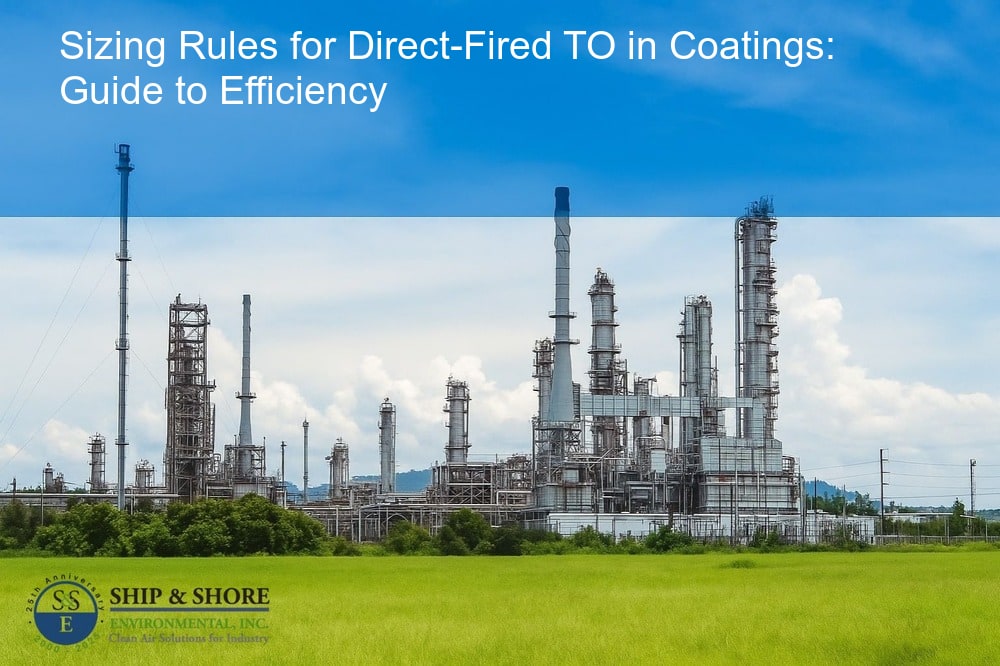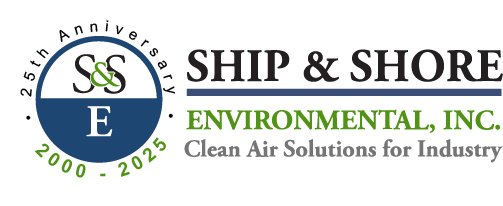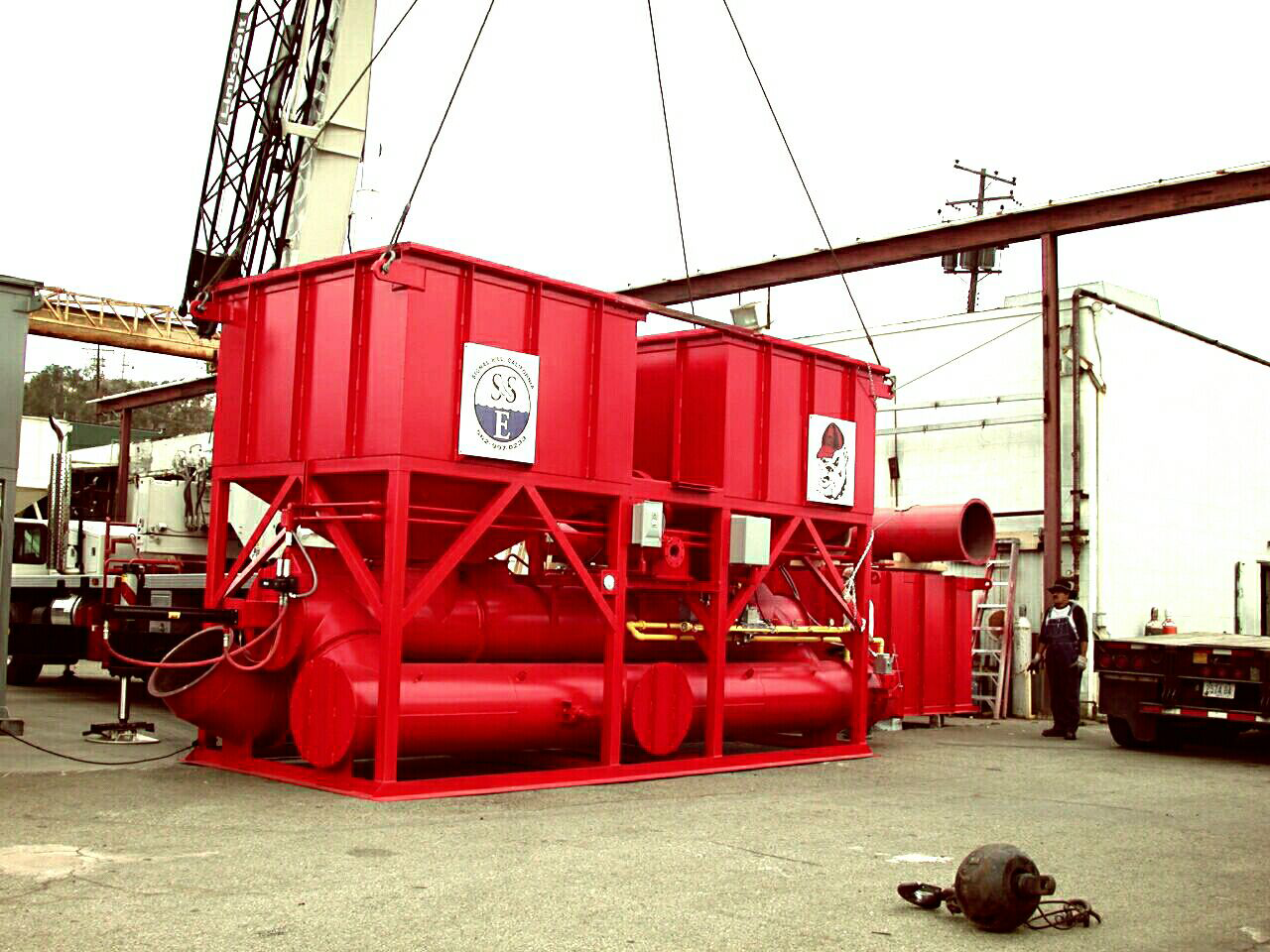
Sizing Rules for Direct-Fired TO in Coatings: A Comprehensive Guide
June 16, 2025 1:37 amUnderstanding Direct-Fired Thermal Oxidizers (TO)
When discussing the optimal performance of industrial processes, especially within the coatings industry, it is essential to understand the significance of sizing rules for direct-fired TO in coatings. Direct-fired thermal oxidizers (TO) are critical equipment used to control volatile organic compounds (VOCs) and other hazardous air pollutants (HAPs) by oxidizing them at high temperatures. This process converts harmful pollutants into less harmful byproducts such as carbon dioxide and water vapor, ensuring cleaner emissions and regulatory compliance.
A direct-fired thermal oxidizer operates by maintaining a combustion chamber at high temperatures, usually around 1400°F to 1500°F. Contaminated air streams are introduced into the chamber, where the VOCs and HAPs are broken down. This type of TO is particularly effective due to its simple design, reliability, and efficiency in treating a wide range of pollutants without requiring additional fuel sources, apart from the pollutants themselves.
Importance of Proper Sizing in Direct-Fired TO
The success of a direct-fired thermal oxidizer largely depends on its correct sizing. This is because an inaccurately sized TO may either be overly efficient, leading to unnecessary operational costs, or inefficient, resulting in inadequate treatment of pollutants. Proper sizing ensures that the thermal oxidizer is capable of handling the specific volume of air and concentration of pollutants generated by the application, particularly within the coatings industry.
The coatings industry often involves extensive use of solvents and chemicals, leading to significant emissions of VOCs and HAPs. Thus, applying the right sizing rules for direct-fired TO in coatings systems is paramount. Properly sized equipment not only optimizes operational efficiency but also improves compliance with air quality regulations, protects public health, and minimizes environmental impact.
Application of Sizing Rules to Direct-Fired TO in Coatings
Applying appropriate sizing rules is vital when implementing direct-fired thermal oxidizers in coating applications. These rules entail calculating the necessary flow rate, temperature, retention time, and other parameters to ensure that the oxidizer effectively processes all emitted pollutants. Factors such as the type and volume of coatings, frequency of operations, and specific VOC concentrations must be taken into account to achieve the best outcomes.
Additionally, energy efficiency and operational costs are impacted by correct sizing, as the energy consumed by the oxidizer and its ability to maintain the required combustion temperatures can vary significantly. By aligning the sizing rules with the operational characteristics of the coating processes, we can achieve optimal performance while maintaining cost efficiency and regulatory compliance.
Key Factors Influencing Sizing Rules for Direct-Fired TO in Coatings
Direct-fired thermal oxidizers (TO) are integral to the coatings industry. Their correct sizing is pivotal for operational efficiency and regulatory compliance. Various factors can influence the sizing rules for direct-fired TO in coatings. Firstly, the type and volume of volatile organic compounds (VOCs) present in the exhaust streams play a crucial role. The concentration of these VOCs directly impacts the oxidizer’s size and capacity.
Next, we must consider the airflow rate. The rate at which air mixes with VOCs needs proper assessment to ensure the oxidizer can handle the combustion process effectively. Additionally, system pressures and temperatures should not be overlooked. Appropriate pressure drops and temperature requirements must be specified during the sizing process to maintain optimal combustion conditions.
Finally, potential future expansions and system scalability are essential. We must forecast any potential increases in production capacity or changes in coating materials, as these could necessitate adjustments to the thermal oxidizer’s size and capabilities.
Steps to Correctly Apply Sizing Rules on Direct-Fired TO in Coatings
Proper application of sizing rules for direct-fired TO in coatings requires a structured approach. We begin with a thorough analysis of the exhaust stream characteristics. This includes identifying the type and concentration of VOCs and other pollutants.
Next, detailed airflow measurements will ensure the oxidizer’s capacity aligns with the system’s needs. Utilizing these data points, we can calculate the appropriate thermal input, factoring in the energy required to achieve complete combustion.
The subsequent step involves incorporating safety margins. We recommend building in a cushion to accommodate potential increases in VOC loads or variations in airflow rates. Both short-term spikes and long-term trends should be accounted for to avoid oversizing or undersizing the thermal oxidizer.
During the design phase, computational models and simulations are instrumental. These tools enable us to predict how the system will behave under various conditions, optimizing the TO’s size for efficiency and compliance.
Lastly, we must not overlook regular maintenance and operational factors. Ensuring that the TO is not just correctly sized but also well-maintained is critical for sustained performance.
Potential Outcome of Inaccurately Sized Direct-Fired TO in Coatings
An improperly sized thermal oxidizer can lead to a host of issues, impacting both efficiency and regulatory compliance. It’s important to understand the risks involved when sizing rules for direct-fired TO in coatings are not correctly applied.
- **Inadequate VOC Destruction**: An undersized TO may struggle to maintain the necessary temperature and residence time needed for effective VOC destruction, leading to non-compliance with environmental regulations.
- **System Overload**: On the flip side, an oversized TO can result in excessive fuel consumption, driving up operational costs. Additionally, it may cause thermal stresses and equipment wear due to temperature fluctuations.
- **Operational Inefficiencies**: Both undersized and oversized systems can suffer from operational inefficiencies, whether it’s through incomplete combustion or excessive power usage.
- **Safety Concerns**: Safety risks may emerge, such as flammable VOC build-up in an undersized TO or overheating in an oversized unit.
Therefore, getting the sizing parameters right is crucial. The consequences of inaccuracies can range from financial burdens to potential safety hazards, reinforcing the importance of thorough and precise calculations.
Did you know? Incorrect sizing of Direct-Fired Thermal Oxidizers in the coatings industry can lead to inefficient pollutant destruction, increased operational costs, and compromised safety.
Securing Efficiency Through Accurate Sizing
The precision of our approach in sizing rules for direct-fired TO in coatings fundamentally anchors the overall effectiveness and efficiency of the thermal oxidation process. Correctly sized TO systems ensure optimal combustion, minimizing emissions while maximizing energy utilization. This balance not only contributes to regulatory compliance but also significantly enhances operational efficiency, translating to cost savings and a reduced environmental footprint.
Reflecting on Performance and Efficiency
Adopting meticulously calculated sizing rules for direct-fired TO in coatings directly correlates with superior performance. The proper application of these rules helps in achieving the desired destruction efficiency, ensuring harmful pollutants from processes like paint coating are effectively neutralized. Furthermore, appropriate sizing upholds consistent performance, averting issues such as excessive wear, unforeseen downtime, and potential non-compliance with environmental regulations.
Future Developments in Thermal Oxidizer Sizing
As we look ahead, the evolution of sizing rules for direct-fired TO in coatings will inevitably be influenced by advancements in technology, regulatory changes, and a growing emphasis on sustainability. Innovations will likely drive more precise computational models and enhanced materials, allowing for even more efficient and tailored TO systems. Staying at the forefront of these developments ensures that we continue to provide solutions that not only meet but exceed industry standards.
The Integral Role of Accurate Sizing in the Coating Industries
In conclusion, accurate sizing of direct-fired thermal oxidizers is imperative for the optimal functioning of these critical systems within the coating industry. We have cemented our role in delivering these precise solutions, ensuring both compliance and efficiency. The advancements on the horizon will only serve to enhance our capabilities, allowing us to continue supporting our clients in achieving their environmental and operational goals.
FAQ
What are the main factors that impact the sizing of direct-fired thermal oxidizers in the coating industry?
In our experience, several key factors determine the correct size of a direct-fired thermal oxidizer. These include the volume and composition of exhaust gases from coating operations, the required destruction efficiency rates, airstream characteristics, and the variability of process loads. Additionally, considering potential future expansions is also essential for ensuring long-term efficiency and effectiveness of the system.
Can the incorrect size of a thermal oxidizer impact its performance in coating applications?
Indeed, selecting a thermal oxidizer that is not properly sized can significantly undermine its performance. An undersized unit may not achieve the necessary destruction rates, whereas an oversized unit can lead to excessive energy consumption and operational costs. Furthermore, improper sizing can result in increased maintenance issues and a risk of non-compliance with environmental regulations.
What are the steps we take to ensure proper sizing of thermal oxidizers for our clients?
Our approach involves several crucial steps to ascertain the accurate sizing of thermal oxidizers. Initially, we conduct a comprehensive analysis of the client’s processes and emission profiles. Subsequently, we apply our advanced sizing models that consider both immediate and prospective needs. Consequently, we recommend a system that is tailored to the client’s specific operational demands, thereby ensuring optimal performance.
What potential outcomes stem from the use of inaccurately sized thermal oxidizers in coating facilities?
If a thermal oxidizer is inaccurately sized, the coating facility may encounter several adverse outcomes. These include reduced destruction efficiency leading to potential environmental violations, increased energy consumption, and higher operational costs. Additionally, this can cause system strain, leading to premature equipment failure and costly downtime. Hence, accurate sizing is paramount to prevent such detrimental scenarios.
What trends do we anticipate in the development of sizing rules for thermal oxidizers in the coatings field?
We expect future trends in the development of sizing rules to be driven by the integration of emerging technologies and the tightening of environmental regulations. Innovations in predictive analytics and advanced materials are likely to refine our sizing processes further. Concurrently, the continuing shift towards sustainable operations will necessitate the design of even more energy-efficient and environmentally friendly thermal oxidizer systems.
Categorised in: Blog

